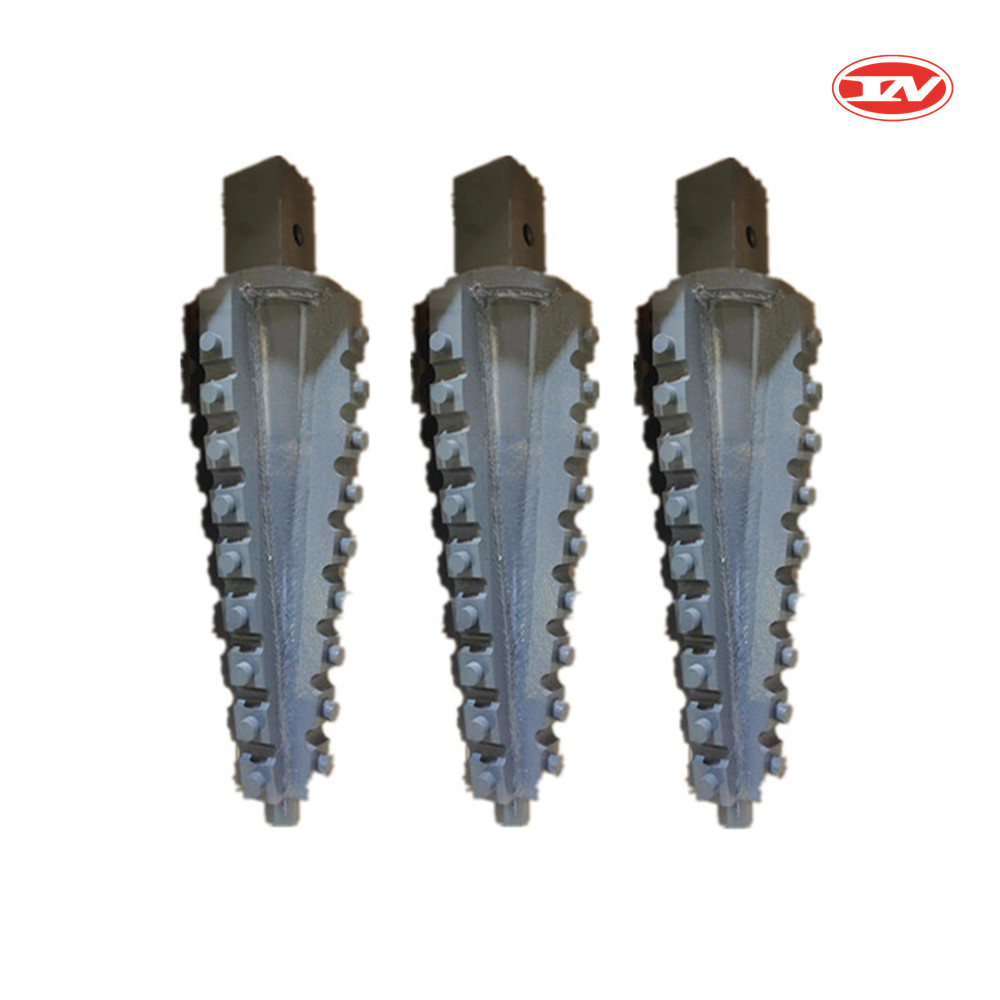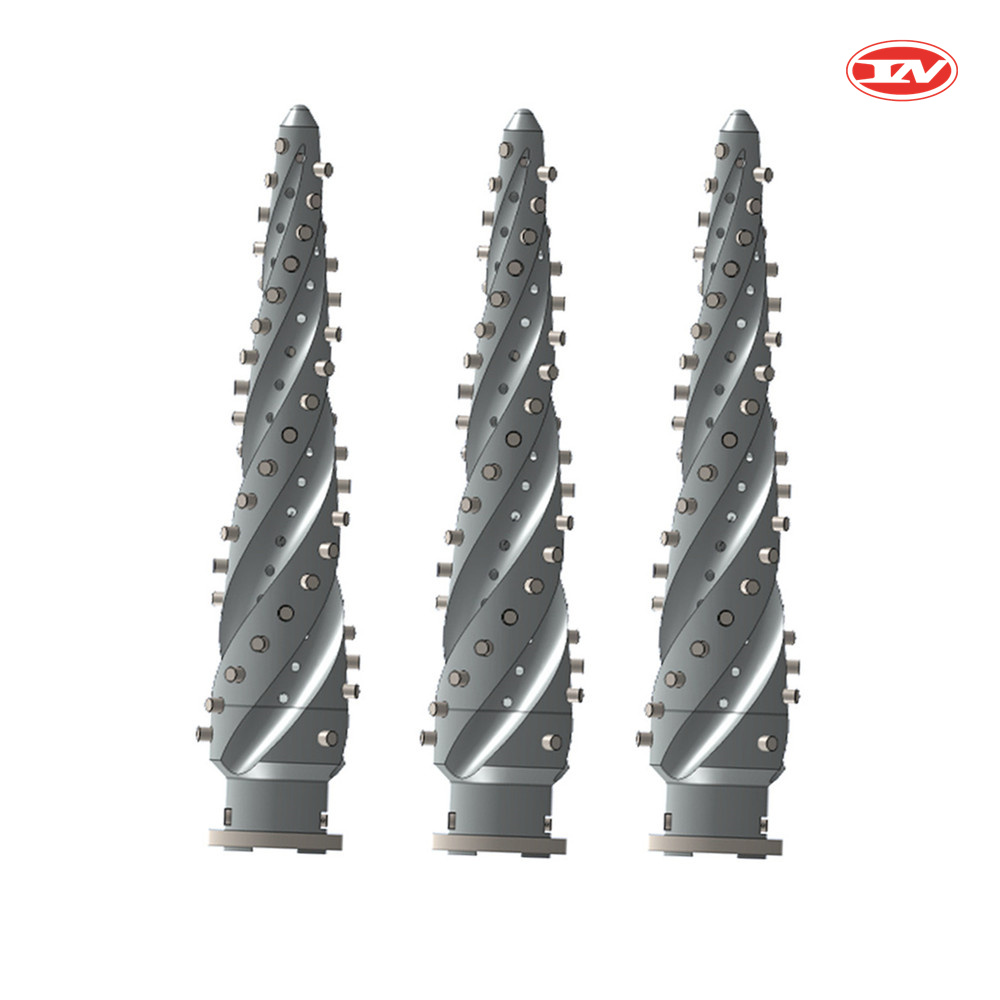An Overview of Three Essential Reamer Bits: Structures, Features and Applications
In the realm of machining and drilling operations, reamer bits play a pivotal role in achieving precise hole dimensions, smooth surface finishes, and consistent tolerances. Among the diverse range of reamer bits available in the market, three types stand out for their unique designs, performance characteristics, and adaptability to specific machining needs: Spiral Carbide Tapping Hole Drill Bit, Integral Insert Reamer Bit, and Replaceable Button-Type Tapping Hole Reamer Bit. This article delves into the structural nuances, key features, and practical applications of these three essential reamer bits, providing insights for professionals seeking to optimize their drilling and reaming processes.
1. Spiral Carbide Tapping Hole Drill Bit: Precision and Efficiency in Tapping Preparations

The Spiral Carbide Tapping Hole Drill Bit is a specialized tool engineered primarily for preparing pre-tapping holes with exceptional precision. As the name suggests, its core components include a spiral flute design and a carbide cutting edge—two elements that synergistically contribute to its outstanding performance in various machining scenarios.
Structurally, this drill bit features a helical spiral flute that runs along the length of the tool. The spiral design serves two critical functions: first, it facilitates efficient chip evacuation, preventing chip clogging that can lead to tool wear, poor hole quality, or even tool breakage. Second, the spiral flute enhances the tool’s stability during drilling by distributing cutting forces evenly across the cutting edge. The cutting edge is crafted from high-quality carbide, a material renowned for its exceptional hardness, wear resistance, and heat resistance. Unlike high-speed steel (HSS) tools, carbide-tipped bits can withstand the high temperatures generated during high-speed drilling, making them suitable for machining tough materials.
One of the key features of the Spiral Carbide Tapping Hole Drill Bit is its precise hole diameter control. Tapping operations require pre-drilled holes with strict diameter tolerances—too small a hole will cause excessive friction during tapping, leading to tap breakage, while too large a hole will result in weak thread engagement. This drill bit addresses this challenge by maintaining tight diameter tolerances, typically within ±0.01mm for most applications, ensuring optimal thread quality in subsequent tapping processes.
In terms of applications, this drill bit is widely used in industries such as automotive manufacturing, aerospace, and precision engineering. It excels in machining materials like alloy steel, stainless steel, cast iron, and non-ferrous metals such as aluminum and copper. Common use cases include preparing holes for tapping in engine components, gearboxes, and precision mechanical parts where thread strength and accuracy are paramount.
2. Integral Insert Reamer Bit: Durability and Consistency for High-Volume Machining

The Integral Insert Reamer Bit is a robust and reliable tool designed for high-volume machining operations that demand consistent hole quality and long tool life. Its unique structure—characterized by integral cutting inserts fused or brazed to a solid tool body—sets it apart from traditional reamer bits and makes it a preferred choice for heavy-duty applications.
The structural design of the Integral Insert Reamer Bit prioritizes stability and rigidity. The tool body is typically made from high-strength alloy steel, which provides a solid foundation for the cutting inserts. The inserts themselves are usually manufactured from cemented carbide or cermet, materials that offer superior wear resistance compared to conventional HSS. The integral bonding between the inserts and the tool body eliminates the risk of insert loosening during high-speed or heavy-load machining, a common issue with removable insert tools.
A standout feature of this reamer bit is its consistent cutting performance over extended periods. The integral design ensures that the cutting edges maintain their original geometry even after prolonged use, reducing the need for frequent tool adjustments or replacements. This consistency translates to uniform hole dimensions across large production batches, a critical requirement in industries such as automotive parts manufacturing and construction machinery production.
Another advantage of the Integral Insert Reamer Bit is its adaptability to various hole geometries. It can be customized with different insert configurations—such as straight flutes, spiral flutes, or helical flutes—to accommodate different machining needs. For example, spiral flute integral insert reamers are ideal for machining deep holes, as they enhance chip evacuation, while straight flute versions are suitable for shallow holes and high-precision finishing.
Practically, this reamer bit is widely employed in high-volume production lines where efficiency and cost-effectiveness are key. It is particularly effective in machining large-diameter holes (ranging from 20mm to 100mm) in materials like carbon steel, alloy steel, and cast iron. Applications include manufacturing cylinder blocks, hydraulic cylinders, and pipeline flanges, where consistent hole diameter and surface finish are essential for component functionality.
3. Replaceable Button-Type Tapping Hole Reamer Bit: Versatility and Cost-Effectiveness for Diverse Needs

The Replaceable Button-Type Tapping Hole Reamer Bit is a versatile and cost-effective tool designed to address the challenges of diverse machining requirements and tool maintenance. Its core design innovation lies in its replaceable button-shaped cutting elements, which can be easily swapped out when worn, eliminating the need to replace the entire tool body.
Structurally, this reamer bit consists of a durable tool body (usually made from alloy steel) with pre-machined slots or seats for the replaceable buttons. The buttons are typically made from tungsten carbide, a material known for its extreme hardness and resistance to abrasive wear. The buttons are secured to the tool body using high-strength fasteners or a press-fit design, ensuring a secure connection during machining while allowing for quick and easy replacement when necessary.
The primary advantage of the Replaceable Button-Type Tapping Hole Reamer Bit is its cost-effectiveness. Unlike integral tools, where the entire tool must be discarded when the cutting edge wears out, this design allows only the worn buttons to be replaced. This significantly reduces tool replacement costs, especially in high-wear applications such as machining abrasive materials or large production runs. Additionally, the replaceable design minimizes downtime, as tool maintenance can be completed quickly without the need for specialized equipment.
Versatility is another key feature of this reamer bit. By changing the type, size, or geometry of the replaceable buttons, the same tool body can be adapted to different machining tasks—such as drilling pre-tapping holes in different material types, adjusting hole diameters, or achieving different surface finish requirements. For example, a tool body can be fitted with sharp, pointed buttons for machining soft materials like aluminum, or with more robust, rounded buttons for machining hard, abrasive materials like cast iron or composite materials.
In terms of applications, the Replaceable Button-Type Tapping Hole Reamer Bit is widely used in industries such as construction, mining, and general manufacturing. It is particularly suitable for machining materials with varying hardness levels, as well as for applications where hole diameter requirements may change periodically. Common use cases include preparing tapping holes in structural steel components, mining equipment parts, and general-purpose mechanical fixtures.
Conclusion
The Spiral Carbide Tapping Hole Drill Bit, Integral Insert Reamer Bit, and Replaceable Button-Type Tapping Hole Reamer Bit each offer unique advantages tailored to specific machining needs. The Spiral Carbide variant excels in precision pre-tapping operations, delivering tight tolerances and efficient chip evacuation. The Integral Insert model stands out for its durability and consistent performance in high-volume production, ensuring uniform hole quality across large batches. The Replaceable Button-Type tool, meanwhile, provides exceptional versatility and cost-effectiveness, making it ideal for diverse applications and reducing maintenance costs.
By understanding the structural characteristics, key features, and application scenarios of these three reamer bits, machining professionals can make informed decisions to select the right tool for their specific operations, ultimately optimizing efficiency, improving product quality, and reducing overall machining costs.